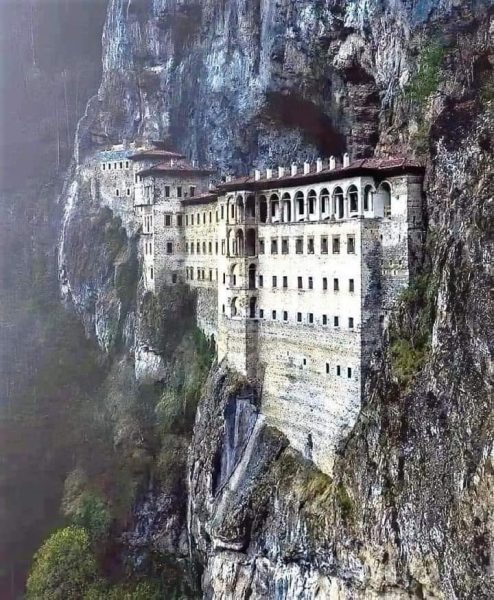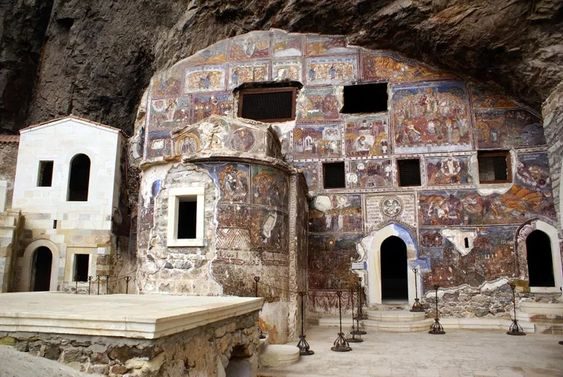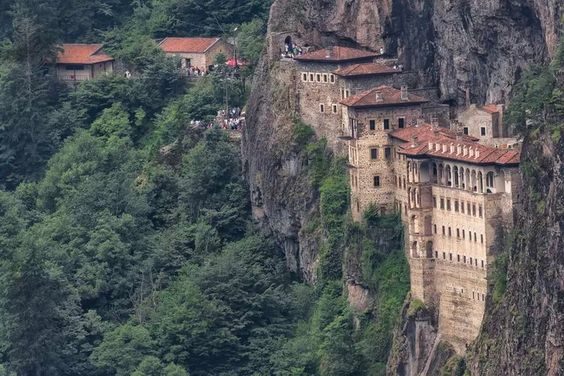
Nestled within the breathtaking Karadag mountains in the Maçka district of Trabzon Province, modern Turkey, lies the illustrious Sumela Monastery—a revered sanctuary steeped in history, spirituality, and architectural splendor. This Greek Orthodox monastery, dedicated to the Theotokos (the title of Mary, mother of Jesus), has captured the hearts and imaginations of visitors for centuries. Legend has it that the monastery was established around the year 386 CE, making it a venerable symbol of religious devotion and cultural heritage.
A Glimpse into History
The origins of Sumela Monastery are shrouded in mystery and folklore, adding to its allure and mystique. According to tradition, the monastery was founded by two Athenian monks, Barnabas and Sophronios, who discovered a miraculous icon of the Virgin Mary hidden in a nearby cave. Inspired by this divine revelation, they established the monastery as a place of worship and pilgrimage, drawing devout followers from far and wide.
Architectural Marvels
Sumela Monastery is renowned for its remarkable architectural design, which seamlessly integrates with the natural landscape of the Karadag mountains. Perched precariously on a sheer cliff face, the monastery’s intricate facades, ornate frescoes, and Byzantine-style domes evoke a sense of wonder and admiration. The main structure of the monastery consists of a series of chapels, living quarters, and communal spaces, each adorned with religious iconography and intricate carvings.
One of the most iconic features of Sumela Monastery is the Rock Church, a cavernous chapel hewn directly into the cliff face.

This awe-inspiring sanctuary, adorned with vivid frescoes depicting scenes from the life of Christ and the Virgin Mary, serves as a focal point for pilgrims and visitors alike.
Spiritual Significance
For centuries, Sumela Monastery has served as a place of spiritual refuge and pilgrimage for devout Christians from across the region. The monastery’s dedication to the Theotokos, or Mother of God, reflects the profound reverence and devotion that believers hold for Mary, the central figure of the Christian faith.
Pilgrims flock to Sumela Monastery to seek solace, receive blessings, and pay homage to the miraculous icon of the Virgin Mary enshrined within its walls. The monastery’s tranquil surroundings, enveloped by the natural beauty of the Karadag mountains, create an atmosphere of serenity and contemplation conducive to prayer and meditation.
Preservation Efforts
Despite its enduring popularity and cultural significance, Sumela Monastery has faced numerous challenges over the centuries, including natural disasters, political upheaval, and the passage of time. Efforts are underway to preserve and restore this architectural gem, ensuring that future generations can continue to experience its timeless beauty and historical significance.
Conclusion

Sumela Monastery stands as a testament to the enduring legacy of religious devotion and architectural brilliance in the region of Trabzon, Turkey. Its majestic presence amidst the Karadag mountains serves as a beacon of spirituality and cultural heritage, inviting visitors to embark on a journey of discovery and enlightenment. As pilgrims and travelers alike marvel at its timeless beauty and storied past, Sumela Monastery continues to inspire awe and reverence for centuries to come.





